 Greetings everyone, a few months ago I’ve covered How to Deploy oVirt, step by step. And as some of you guessed, the next topic was how Veeam can help with the workloads deployed on top of Red Hat Virtualization (or oVirt). At the last VeeamON Update 2021, the Public Beta of Veeam Backup for RHV dropped and I have decided to take a deep dive on the solution, together with you.
Greetings everyone, a few months ago I’ve covered How to Deploy oVirt, step by step. And as some of you guessed, the next topic was how Veeam can help with the workloads deployed on top of Red Hat Virtualization (or oVirt). At the last VeeamON Update 2021, the Public Beta of Veeam Backup for RHV dropped and I have decided to take a deep dive on the solution, together with you.
Veeam Backup for Red Hat Virtualization – Quick Overview, Download, Deploy, and Configuration – On a video
As I am aware that some of you prefer a video, with sections and all, so you can jump between the different sections, hear and see how is done, find this 22-minute video with everything you might need:
Veeam Backup for Red Hat Virtualization – Quick Overview, Download, Deploy, and Configuration – On images, step by step
What is Veeam Backup for Red Hat Virtualization
V eeam Backup for Red Hat Virtualization (Veeam Backup for RHV) is an additional component of Veeam Backup & Replication responsible for protection and disaster recovery tasks for Red Hat Virtualization (RHV) hosts. Veeam Backup for RHV integrates with Veeam Backup & Replication version 11a (starting from build 11.01.1261 and later) allowing you to back up RHV VMs to Veeam backup repositories.
eeam Backup for Red Hat Virtualization (Veeam Backup for RHV) is an additional component of Veeam Backup & Replication responsible for protection and disaster recovery tasks for Red Hat Virtualization (RHV) hosts. Veeam Backup for RHV integrates with Veeam Backup & Replication version 11a (starting from build 11.01.1261 and later) allowing you to back up RHV VMs to Veeam backup repositories.
For integration with Veeam Backup & Replication, Veeam Backup for RHV uses an agentless approach to back up RHV VMs and volume groups. The solution creates image-based backups of VMs at a specific point in time. Veeam Backup for RHV retrieves the VM data block by block, compresses, deduplicates it, and forwards it to a backup repository.
With Veeam Backup for RHV, you can perform the following operations:
- Create backups of RHV VMs and store them in Veeam Backup & Replication repositories.
- Restore VMs from backups.
- Restore VM disks from backups.
Backup Infrastructure Components
Veeam Backup for RHV backup infrastructure includes the following components:
- Veeam Backup for RHV: the main component that performs backup and restores processes. Veeam Backup for RHV is deployed as a Linux-based VM on the RHV host.
Veeam Backup for RHV includes the following additional components:
- Web console of Veeam Backup for RHV: a web console that allows you to manage backup and restore operations, configure notifications and configure settings of Veeam Backup for RHV. For more information, see Web Console.
- Data Mover: a service that transports VM backup data from RHV host to backup repositories.
- Veeam Updater: a component that is responsible for installing and scheduling the updates. For more information, see Updating Veeam Backup for Red Hat Virtualization.
These additional components are automatically deployed on the same VM where Veeam Backup for RHV is installed. RHV Backup Proxy VM (appliance) unites Veeam Backup for RHV, the web console, Data Mover and Veeam Updater.
- Backup repository: a storage location where Veeam Backup for RHV stores backup files. You can add multiple repositories. For the list of supported repository types, see Configure Backup Repository.
The backup repository also includes the Data Mover service that is responsible for receiving VM backup data from the RHV host.
- Veeam Backup & Replication server: a server that manages backup repositories. Veeam Backup for RHV stores RHV VM backups on repositories added to Veeam Backup & Replication. To be able to use these repositories, you must connect Veeam Backup for RHV to Veeam Backup & Replication.
Helpcenter – https://helpcenter.veeam.com/docs/vbrhv/userguide/overview.html?ver=10
How-to Prepare the Veeam Backup and Replication Repositories
The first step is always to enable a few Backup Repositories to accept Backup from Agents, select the Repository you need, Properties:
 On the options, you can narrow to just a few Users or Groups, on my case, I have just selected Allow to everyone:
On the options, you can narrow to just a few Users or Groups, on my case, I have just selected Allow to everyone: 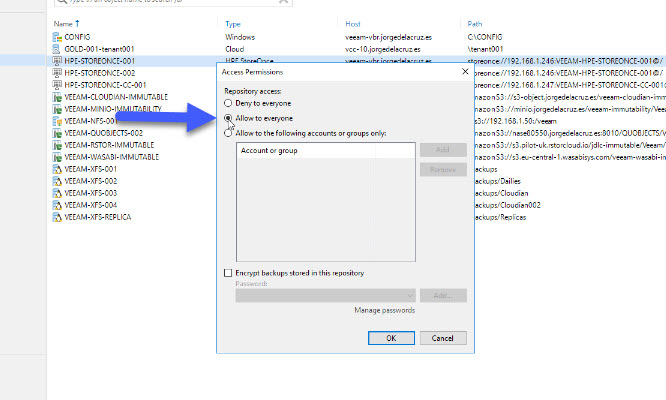
How-to upload the Veeam Backup for RHV image to the Red Hat Virtualization Cluster
Now that we have downloaded the image from the official website, I have it already on the VBR Server, but it can be anywhere with access to the Red Hat Virtualization Cluster really. Do not forget to extract the image, you should have .ovf and .vmdk:
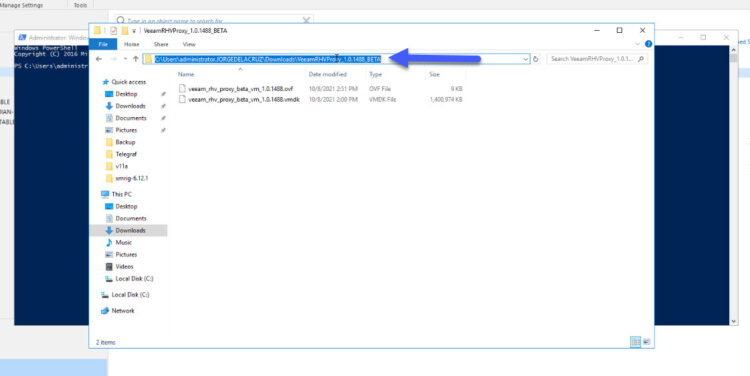 We are going to use pscsp on PowerShell, so we go to google and search by pscsp, it is downloaded from the same site as putty:
We are going to use pscsp on PowerShell, so we go to google and search by pscsp, it is downloaded from the same site as putty: 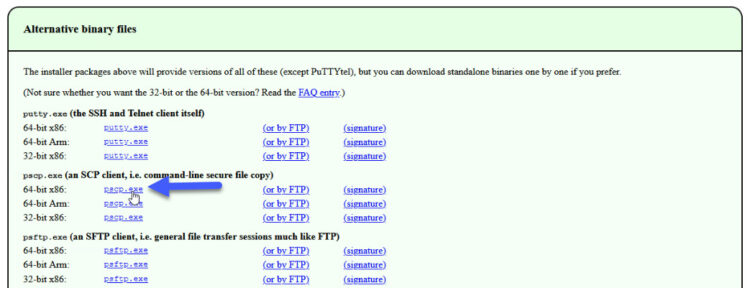 The command, quite simple, just pscp.exe, port, the path of the file and the target to upload, we accept the SSL warning and the image will be uploaded within seconds:
The command, quite simple, just pscp.exe, port, the path of the file and the target to upload, we accept the SSL warning and the image will be uploaded within seconds: 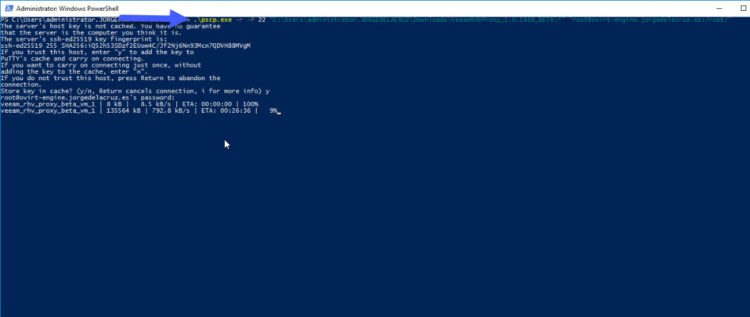 Now we will need to SSH into the Red Hat Virtualization Host, important as this needs to be done on one of the Hosts not the Management server. You can create a folder under /tmp if you like, on my case I moved the image to a path where I know the Host has access, you need to chmod 755 the two files, and change the permissions to 36:36 to those two files:
Now we will need to SSH into the Red Hat Virtualization Host, important as this needs to be done on one of the Hosts not the Management server. You can create a folder under /tmp if you like, on my case I moved the image to a path where I know the Host has access, you need to chmod 755 the two files, and change the permissions to 36:36 to those two files: 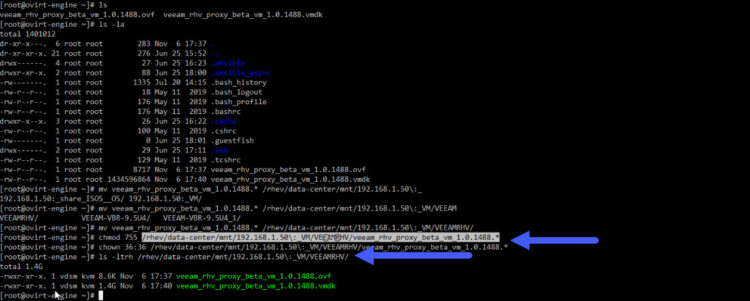
How-to Import and Run Veeam Backup for RHV
Finally! We have the image ready to be deployed, so directly from our Red Hat Virtualization Manager UI, we go to Compute – Virtual Machines – Import:
 We click on Source to be Virtual Appliance (OVA), and we put the path where we uploaded the files (and applied the mentioned permissions), we will see the image, just click on the arrow to Import it:
We click on Source to be Virtual Appliance (OVA), and we put the path where we uploaded the files (and applied the mentioned permissions), we will see the image, just click on the arrow to Import it:  We can change the name of the VM before we import it:
We can change the name of the VM before we import it: 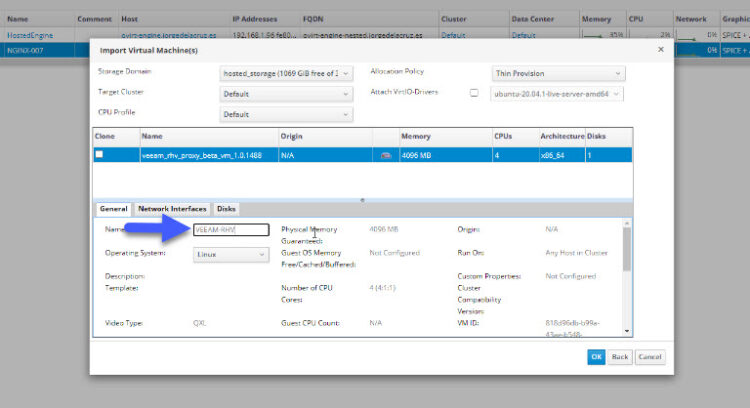 And we will see the progress of the import, it just took me a few minutes, but it might vary depending of the resources:
And we will see the progress of the import, it just took me a few minutes, but it might vary depending of the resources: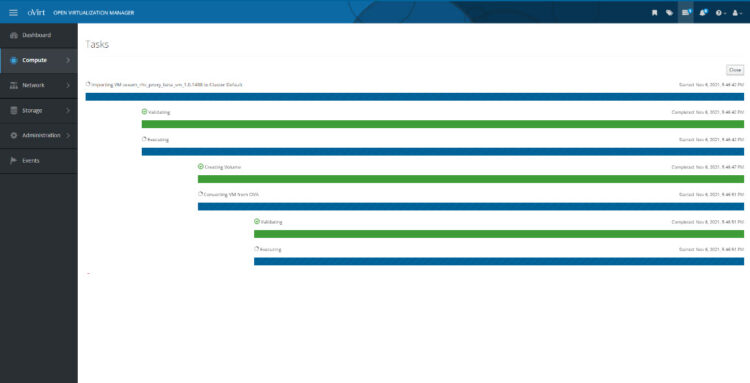 Finally, we click on Run, and the VM will start:
Finally, we click on Run, and the VM will start: We can open the VM Console of the Proxy, and after a few minutes we will see that an IP will appear, so we are ready to jump to the final step:
We can open the VM Console of the Proxy, and after a few minutes we will see that an IP will appear, so we are ready to jump to the final step: 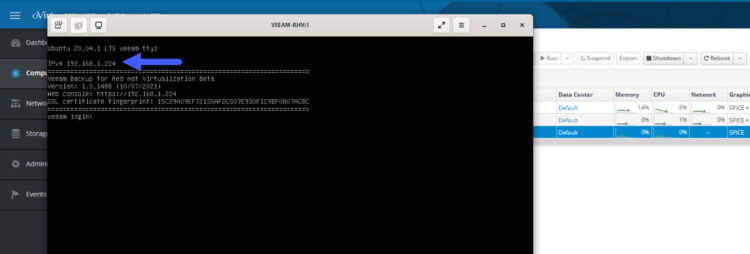
Initial Configuration of Veeam Backup for RHV
Finally! We go to the https://IP and we will see the next login screen, user and pass are veeam/veeam:
 A small wizard will appear, we will select the first option, Install on this case:
A small wizard will appear, we will select the first option, Install on this case:  We read the whole EULA, accept the terms, and we select Next:
We read the whole EULA, accept the terms, and we select Next: 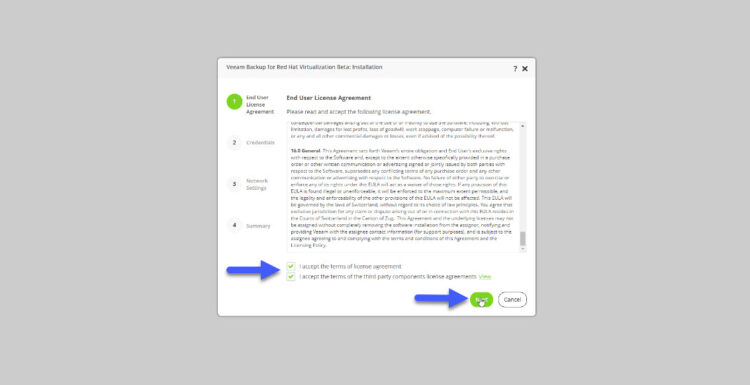 Now, we have an opportunity to change the password for the veeam user:
Now, we have an opportunity to change the password for the veeam user: 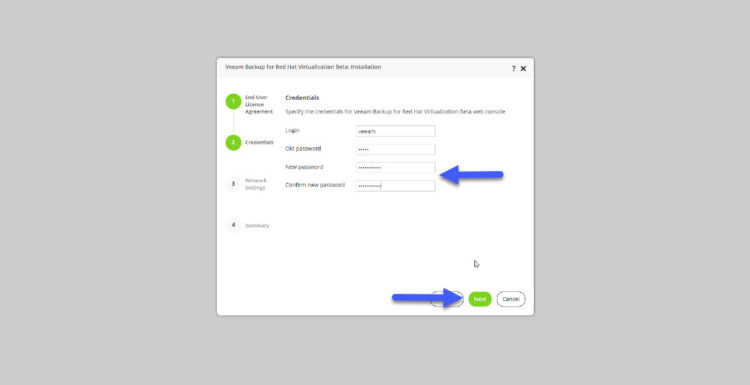 It is now time to select an FQDN and a proper IP for the Veeam Backup for RHV Proxy (Please note: we should have the DNS entry already created)
It is now time to select an FQDN and a proper IP for the Veeam Backup for RHV Proxy (Please note: we should have the DNS entry already created) 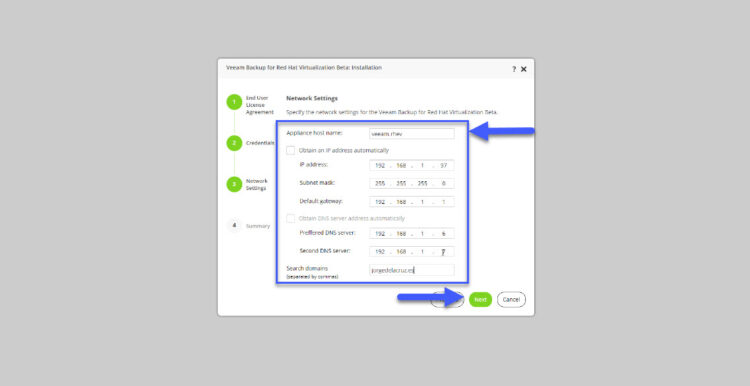 If we are happy with everything, we will click on Finish:
If we are happy with everything, we will click on Finish: 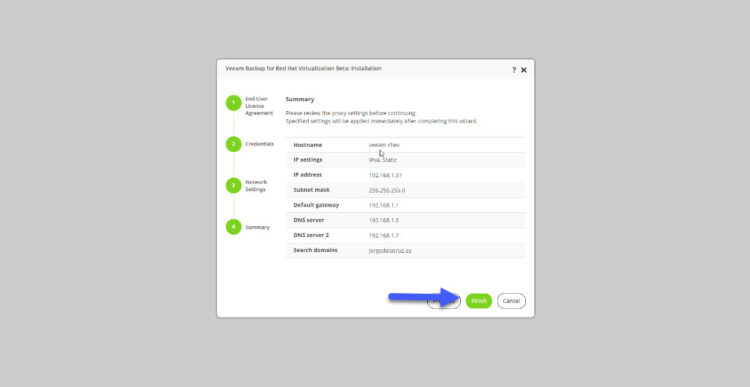
Advanced Configuration of Veeam Backup for RHV
We will access the new IP, or FQDN, and we will see the great HTML5 Dashboard and configuration, let´s click on the gear icon to go into settings:
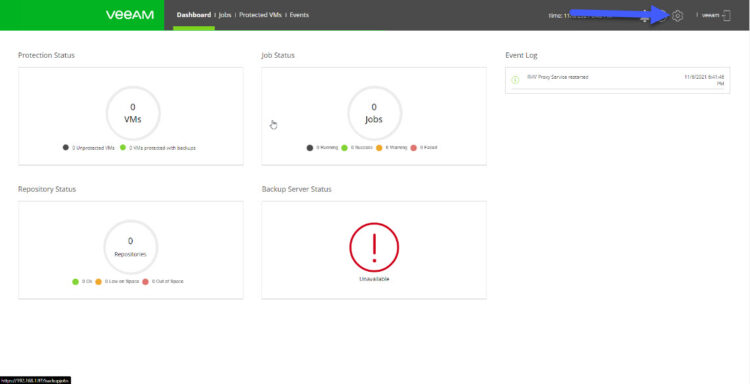 First step is to add the Veeam Backup and Replication Server:
First step is to add the Veeam Backup and Replication Server:  Now we will need to add the Red Hat Virtualization Cluster (hint user will be something like administrator@internal or really the SSO you have)
Now we will need to add the Red Hat Virtualization Cluster (hint user will be something like administrator@internal or really the SSO you have) 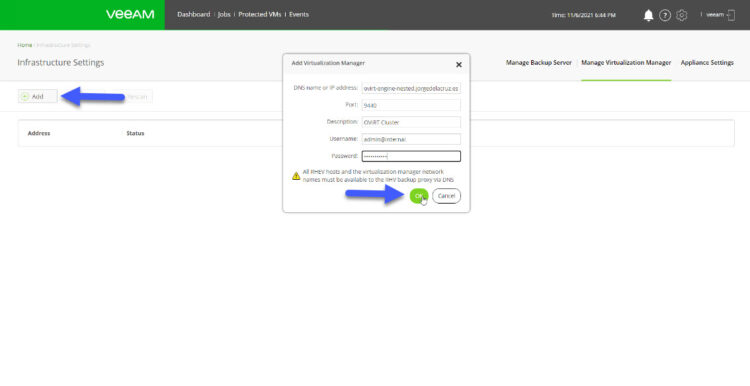 Under Infrastructure Settings, we can find a Config Backup, useful if we want to restore at any time:
Under Infrastructure Settings, we can find a Config Backup, useful if we want to restore at any time: 
How-to Create a Data Protection Policy of Veeam Backup for RHV
We go to Jobs – Add – then create a Policy with the name we want:
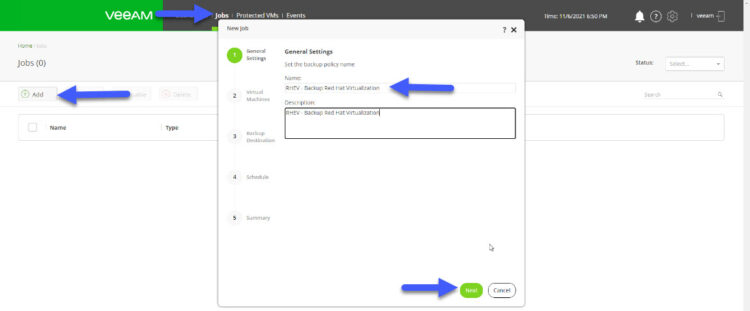 Now, we will select the VMs we want to protect, we can add them from Tags, or by selecting them manually by name, etc:
Now, we will select the VMs we want to protect, we can add them from Tags, or by selecting them manually by name, etc: 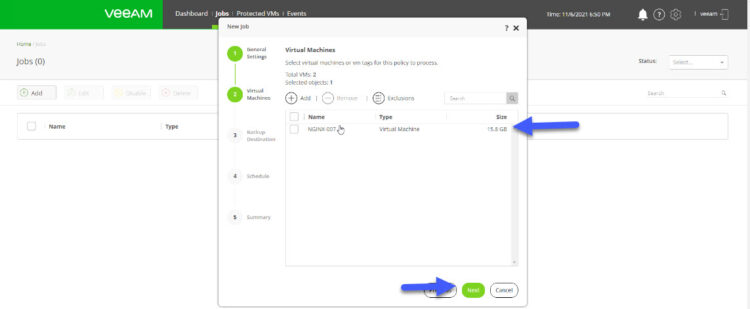 We will point now this policy to a Backup Repository, and select the restore points we want to have:
We will point now this policy to a Backup Repository, and select the restore points we want to have: 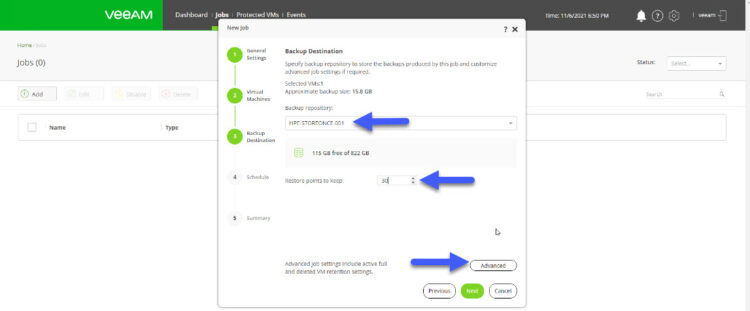 I have selected Advanced, and marked to perform a full backup every Saturday for example:
I have selected Advanced, and marked to perform a full backup every Saturday for example: 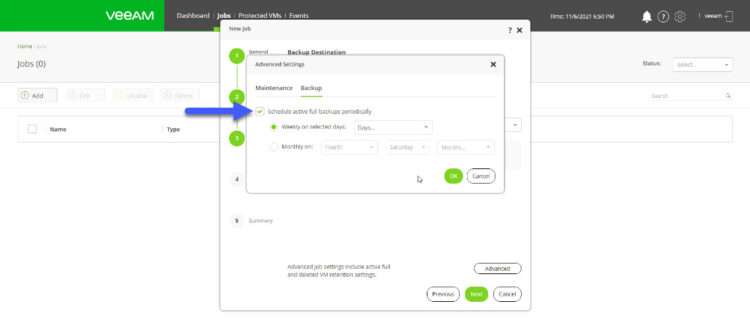 Finally we select how often this Data Protection Policy will be running:
Finally we select how often this Data Protection Policy will be running: 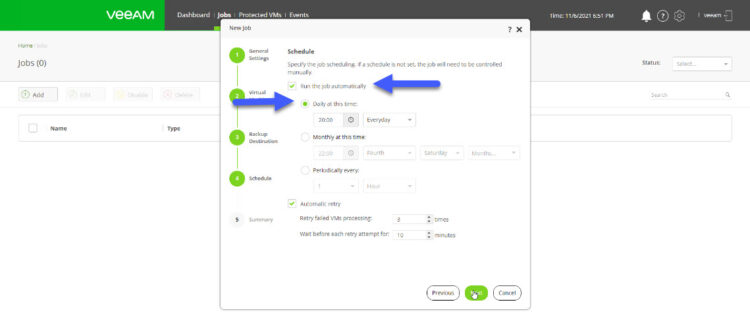 If we are happy, check the option to run the job now, and click Finish:
If we are happy, check the option to run the job now, and click Finish: 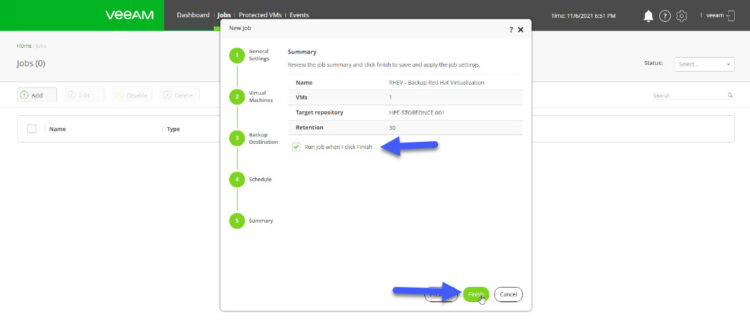 Now the policy will start running, and after finishes, we will see something like this:
Now the policy will start running, and after finishes, we will see something like this: 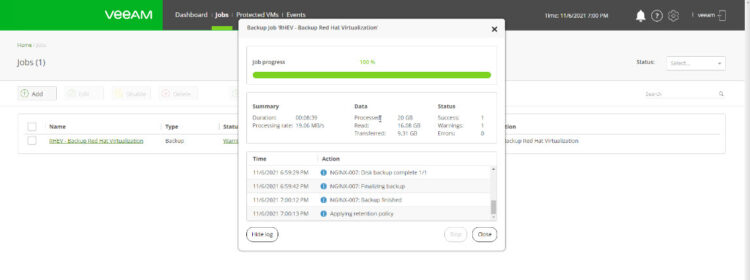
Restore options for Backups performed with Veeam Backup for RHV
As you might now, Veeam is truly universal in terms of restore, for example if we pick a Data Protection Policy of Veeam Backup for RHV:
 And we try to restore any point, we will have really nice options like Instant VM Recover to VMware, Hyper-V, or even restore these VMs into EC2, AzureVM, or GCP VM, among the usual File-Level Recovery:
And we try to restore any point, we will have really nice options like Instant VM Recover to VMware, Hyper-V, or even restore these VMs into EC2, AzureVM, or GCP VM, among the usual File-Level Recovery: 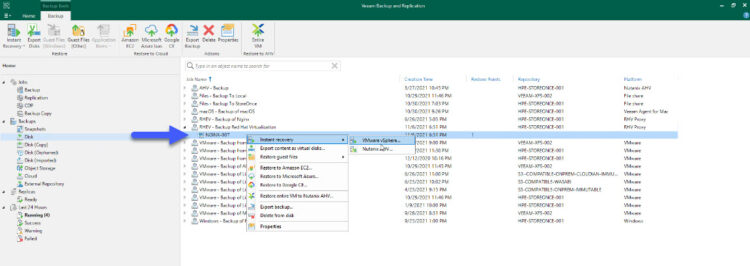 If we connect to the Veeam Backup for RHV Proxy itself, and we go to Protected VMs:
If we connect to the Veeam Backup for RHV Proxy itself, and we go to Protected VMs:  We can of course restore the VM back to wherever it was, or as a new VM without any problem:
We can of course restore the VM back to wherever it was, or as a new VM without any problem: 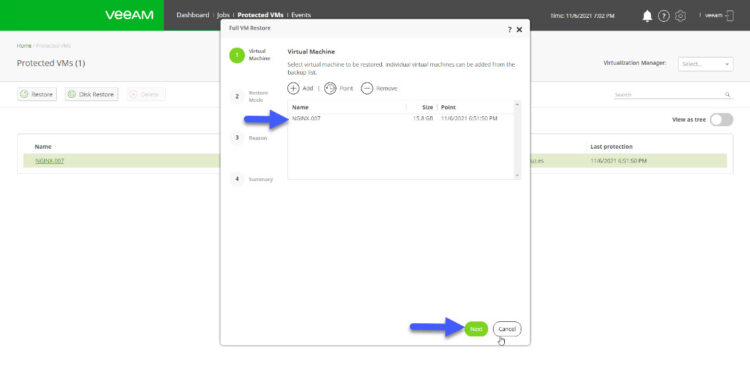
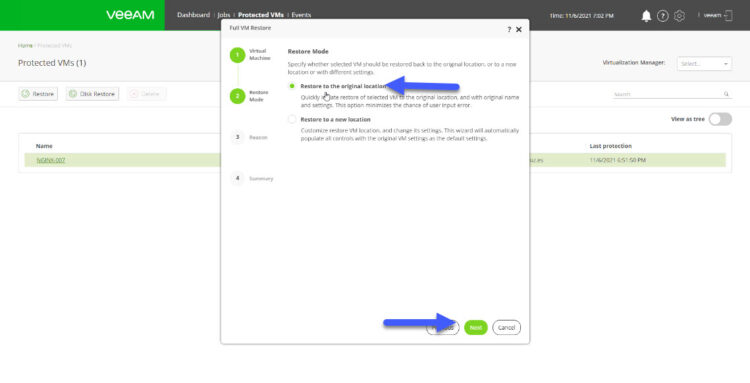 The Dashboard of Veeam Backup for RHV will give us a good overview about the VMs that have protection vs. the ones they are not protected, jobs status, etc.
The Dashboard of Veeam Backup for RHV will give us a good overview about the VMs that have protection vs. the ones they are not protected, jobs status, etc. 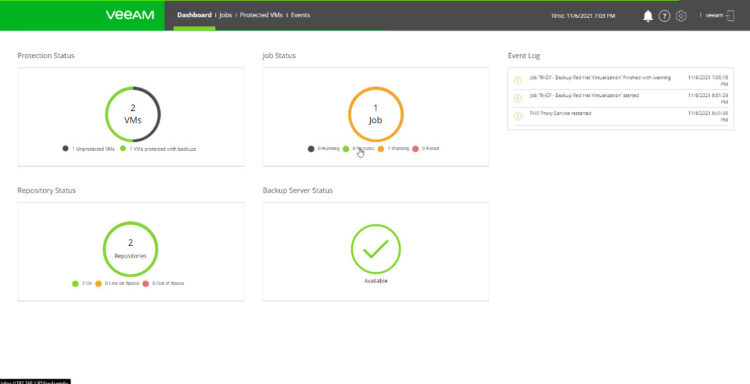
More Links
Here is a collection of worth to read links about Veeam Backup for RHV:

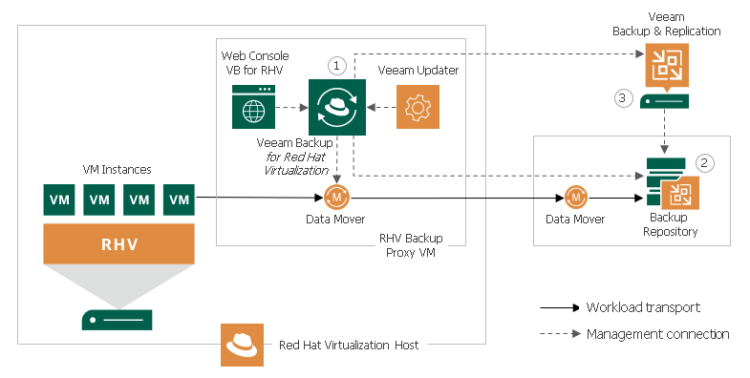
Leave a Reply